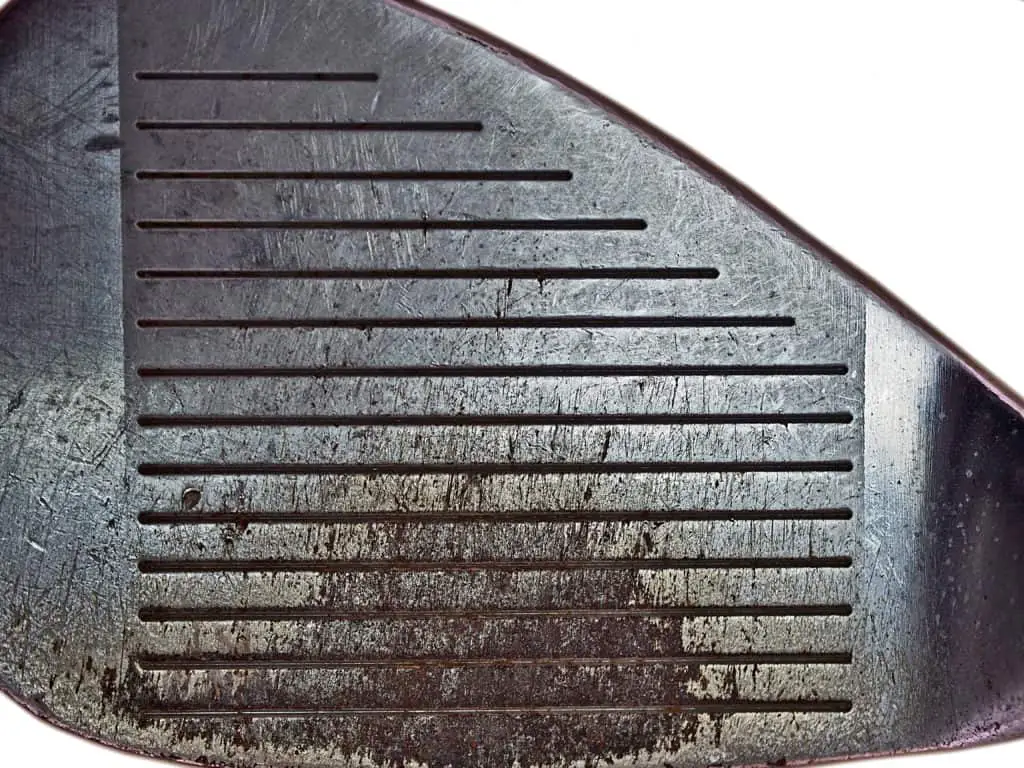There are two different philosophies and approaches on when to use a wedge. The first approach is to use the 60 degree wedge on every shot. These golfers learn how to de-loft the club when a lower shot is needed. The second approach is to use a variety of clubs depending on the shot needed and have a pretty standard chipping motion for all shots and simply change the club.
One of my favorite and most trustworthy clubs in my bag is the 60 degree wedge. Ever since first using a 60 degree wedge, which is now over 20 years, the short game options and shots have improved drastically.
People often debate whether a 60 degree lob wedge is needed and my thoughts on the question is that it is a no brainer…make sure you have one in your bag.
The 60 degree wedge can be quite versatile and give you the confidence needed to hit the shot that is required on the course. The newer style of building courses, which are often firm, fast, undulating and have bunkers all around them have changed from the past when a 60 degree wedge might not have been necessary.
However, go play any challenging, more modern style course and you will see that the 60 degree wedge is essential.
Update: There was a period of time when I was used a 60 degree wedge for just about every chip and pitch shot. I now find myself using my 54 degree wedge more often and hitting the bump and run when possible. The bottom line is that there is no perfect way, yet there is a way where you feel most comfortable and confident!

When To Use a 60 Degree Wedge?
Where you can use a 60 degree wedge
- Fairway
- Rough
- Sand
- Good lie
- Bad lie
Below we will take you through the following topics and questions:
- Should I use my 60 degree everytime wedge or vary my clubs when chipping?
- How far should I hit my 60 degree wedge?
- How to use a 60 degree wedge?
- Can you use a 60 degree wedge in the sand?
- Why use a 60 degree wedge?
Should I use my 60 degree wedge every time or vary my clubs when chipping?
Option 1:
My approach is use the 60 degree wedge on every chip shot, except for the most basic bump and run. I find that getting comfortable with one club and how it is going to react to the ground and different lies is easier than having a variety of clubs that I turn to at different points.
It takes the guesswork out of the round of golf and allows me to get very comfortable with the capabilities of my 60 degree lob wedge. Let’s face it, most amateurs have limited time to practice, so learning some go to shots with one club might be the easiest approach. I rely on three different shots:
- The standard chip where I use very little hinge set and make sure to utilize the bounce on the club.
- The hinge and hold method where I am trying to hit a lower shot (difficult).
- The flop shot where I play the ball a little forward and let the club natural hinge.
When I get to the ball the only question if it is not a bump and run is which shot is the best for the situation. Outside of the flop shots if I short side myself, the first option above is a simple shot to hit that can be hit off of just about any lie on the golf course. It is a simple motion where the club is just skimming the ground and I am staying calm over the shot.
Option 2:
There are those golfers that prefer to vary the clubs in their bag, even if it is as simple as using a 54 or 56 degree wedge on some of the lower shots. If you are someone that wants to make a similar motion on every chip shot, then utilizing different clubs might be for your.
The idea here is that your motion can stay pretty basic and you just have to select the right club. People will chip with any club typically from the 7 iron on up to the 60 degree wedge.
Testing the Options – How to test these two approaches:
- Step 1: Practice for 30-45 minutes with a variety of shots.
- Step 2: Take 10 balls from a variety of spots and see how many times you can chip a ball within 6 feet, but you can only use your 60 degree wedge.
- Step 3: Take 10 balls from a variety of spots and see how many times you can chip a ball within 6 feet, but you should vary your clubs this time.
- Step 4: Repeat steps 2 and 3 until you have a data set of 30 chip shots.
- Step 5: Review the data and your comfort level with both approaches and help this guide you in your decision making process.
- Special Note: You might want to do this over several sessions where you can have data on 100-200 shots and frequently test to see how you feel. You also want to take into consideration your “bad” shots. Were the bad shots much worse with one approach over the other?
When you head to the course you want to be confident with your approach that you can hit every chip shot within about 6 feet. The more your practice and get comfortable with your club (option 1) or your motion and club selection (option 2) you will play better golf and quickly realize how beneficial practicing your short game can be in reducing your scores.

How far should I hit my 60 degree wedge?
There are some golfers who will only use their 60 degree wedge right around the green for chipping or pitching. Other golfers will hit their 60 degree wedge anywhere from 60-90 yards on average with a full swing.
My comfort zone with my 60 degree wedge is between 60-80 yards. I do not like to take a 100% swing with my 60 degree wedge as it seems like a recipe for disaster.
With all of my wedges I want to stay in control and keep in mind the wedge game is about precision and not about power. I move the ball back and forward in my stance depending on the height of the shot, but most importantly stay smooth with my swing speeds and not try to force anything.
Quick Tip:
When you are taking a bigger swing with the 60 degree wedge, make sure the ball is in the middle to back of your stance with some weight pre loaded on the front side. If you don’t use this technique and you add some loft at the bottom with your swing you should hit that embracing sky ball that only goes 30 yards.
Keep in mind that the angle at which the shot takes will be less than 60 degrees if you execute the shot properly. The pros also de-loft their clubs with the wedges 99% of the time. This helps control launch angle, spin rate and overall distance. If you want to spin the ball a bit, reduce the loft and make sure you hit the ball before the ground.
How to use a 60 degree wedge?
The number one recommendation is to learn how to use the bounce on the club. Wedges are built with a certain amount of bounce to help the golfer not stub the club into the ground and hit the dreaded shot that only goes 1 to 2 years because you chunked it.
To practice this, simply set the club down on the ground and make a consistent back and through swing where you do not dig or lift up on the ball. You will find that the club will slide through and simply toss the ball towards the hole. The number one thing not to do is to over hinge the hands or the club.
Hinge is utilized to create power, keep in mind that chipping is about precision and not power. You do not need extreme hinge. Some naturally hinge won’t hurt, but do not intentionally hinge.
Here is an excellent video on using the bounce:
Can you use a 60 degree wedge in the sand?
Absolutely! In fact, I would recommend utilizing your 60 degree in the sand even over your 54 or 56 degree sand wedge. The extra loft will allow you to ensure you get the ball up and out of the sand.
If you have a longer bunker or sand shot, then utilizing a 50, 52, 54, or 56 is perfectly fine, but on those short, difficult sand shots, get your 60 degree wedge out and splash it out of the sand.
Some sand tips brought to you by Shawn Clement:
Why use a 60 degree wedge?
One word, versatility. I have found that the 60 degree wedge brings many options to your game. Getting comfortable with adding loft or taking loft away can help take your game to the next level. My goal is to get up and down to save part at least 50% of the time.
In my most recent round I was 5 for 8 and 5 for 7. The ability to save pars will give you some positive vibes on the course, keep a great round going or save a round headed in the right direction and also frustrate your opponent! In my opinion it all starts with the 60 degree wedge and getting comfortable with it.
My best days with the wedge were during my teenage years because I spent endless amounts of hours around a putting green hitting all kinds of shots with my 60 degree wedge. Practice is the key and getting comfortable with your different shot options.
Quick Tip:
Recently, I have found that chipping ping pong balls in my basement off of the carpet is a great way to practice indoors. I can try different shots and get comfortable with my 60 degree wedge.
There are a lot of ways to practice around your house and you don’t always have to get to the golf course to practice. The short game is much easier to practice around the house than the full swing. Make it your mission to be the best short game player in your foursome and your score will thank you!
Final Thoughts
I often compare chipping to playing defense in basketball. While your driver swing or iron swing might struggle that day, you can always chip well. To me this is similar to basketball in that your outside shot might not be falling that day, but you can always play defense.
Chipping will bring consistency to your game that you are seeking and it will influence your shot decision in a positive manner as you will have more options when in a bad position on the golf course if you have confidence that you can get up and down to save your par.
Does your wedge look like this? Might be time for a new one!

I love the Cleveland and Titleist Vokey Wedges. I have used both of the years and believe they are phenomenal. Here are two recommendations for you:
Here is my current wedge that I playing (Variety of lofts available):
Take Action – What You Can Do Today to Get Better
What does this mean for you? I believe in the following recipe to get better:
1 – Improve your motion in the golf swing by identifying a golf instructor. Here are some options:
Here is a list of golf instructors that we have reviewed:
2 – Train to swing faster and improve your swing speed. Here are some options:
Looking to gain more Speed and Distance in your swing. Two Options:
3 – Understand course strategy and work to break through your next barrier. Here is a series on breaking through:
We have provided guides on how to break 100, 90, 80 and 70. Check out more below, if interested.
4 – Practice Frequently
Did you know that I build a golf simulator in my garage and have played over 500 rounds of golf on my SkyTrak system? It has been a game changer and one worth checking out. Here are some of my other posts on golf simulators frequently asked questions:
- Is a Golf Simulator Worth It?
- How to Build a Golf Simulator?
- What is the Best Golf Simulator?
- Golf Simulator Accessories?
- How to Build a Golf Simulator for under $7000
- Top 11 Reasons to Buy a SkyTrak
- How to Build a Golf Simulator for Under $1000
- Why Build A Golf Simulator?
- What Space is Needed?
- Can A Golf Simulator Improve My Game?
- How Much Does A Golf Simulator Cost?
- Don’t Forget to Check out our 15 best golf swings of all time.

